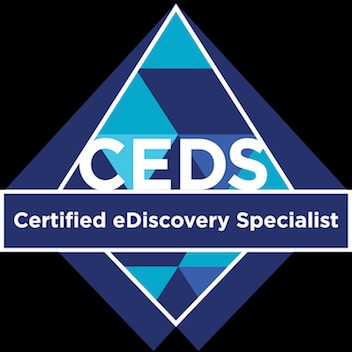티스토리 뷰
Everything but the Kitchen Sink: New Data Types and E-Discovery
YOURIFE 2016. 4. 29. 10:49
Almost any activity we take part in creates data; it no longer resides just on email servers or your laptop or mobile phones. Data resides in the cloud, in apps, on social media, in your watch or fitness tracker. For e-discovery practitioners, preserving and collecting these new data types can be a continual challenge—as soon as you find a solution for one some new thing pops up.
That was the idea behind this week's e-discovery cartoon, drawn by Luke Rolka, Creative Director at Exterro. Potted plants don't create data (yet!) but 15 years ago, neither did cars and tvs. There are plenty of challenges that collectively make preserving and collecting these new data types a headache, but they can't be ignored in the hopes they'll go away. The data is still there, and potentially, you may have to collect it during litigation.
With new data sources there is a tug of war between business needs and legal/regulatory obligations, but regardless, the obligation to collect remains the same. But the overall approach also remains the same, as Antonio Rega, Director of Berkley Research Group, points out: “The essence of how to deal with these new media types is not really that different from the way we've handled media types in E-Discovery all along, which is to identify data within an organization and then decide what to do with that data. Once there's an understanding of what exists, then you can plan collection strategies."
Three new data types that often come up in e-discovery are Cloud, Social, and Instant Messaging platforms:
The biggest challenges around Cloud platforms (such as Google Drive, Office 365, and Dropbox) are avoiding metadata spoliation and preserving data from alternative data sources within the platform, such as an instant messaging tool.
Speaking of Instant Messaging, 80-90% of all companies use third-party IM platforms. Some preservation challenges with these include the lack of clear timestamps and date ranges, and the fact that collection often takes the form of a data dump into a spreadsheet which doesn't include usable information.
Finally, Social Media platforms are an ever-increasing form of data requested in discovery. A major challenge arising with social media is that courts are demanding more specificity when it comes to collection rather than broad “fishing expeditions."
To better face the challenges that new data types bring, follow this Collection/Preservation Checklist:
- What data is currently being stored?
- How and where is that data preserved?
- How is that data accessed?
- Put policies and procedures in place, and train/audit for compliance
- Always Communicate: Talk to IT, Talk with Peers, Talk with other Business Units
- Work with outside counsel/consultants to create a reasonable process for preserving/collecting these new data types
'eDiscovery' 카테고리의 다른 글
| Full Disk Imaging is Expensive Overkill for eDiscovery Collection (0) | 2016.06.23 |
|---|---|
| 이제 UK 법원도 승인해 줬네요 (0) | 2016.06.23 |
| 다시 늘어난 美 NPE 소송 (0) | 2016.04.04 |
| 5 Things to Include in an E-Discovery Clawback Agreement (0) | 2016.01.21 |
| Huron Consulting Group Announces Definitive Agreement to Divest Huron Legal Business (0) | 2016.01.06 |
